Davao-based WBCP member Pete Simpson joins the Region XI DENR for the 2013 AWC in three sites in Davao and also visits a fourth site on his own.
space
AWC in Davao
by Pete Simpson
As when pictures are posted of Ashy Ground-Thrush and Green-Faced Parrotfinch, I looked on enviously from my home in Davao as the Manila birders planned their Asian Waterbird Census itinerary. But thanks to information and encouragement from Alex Tiongco and Ivan Sarenas, I found myself at the office of Region XI DENR, specifically the office of Eduardo Ragaza, Chief of Protected Areas and Wildlife Division.
He was most welcoming and I was invited to join a number of reconnaissance trips and counts for the AWC around the Gulf of Davao.
The Gulf of Davao is a vast expanse of water, over 8,000 square kilometers, it is bounded by over 600 kilometers of coastline and touches all four provinces of Region 11 — Davao del Sur, Davao del Norte, Davao Oriental, Compostela Valley and Davao City.

Working with the DENR was at times challenging. Annoyances included a 4am text message to reschedule an 8am meet time and them arranging to visit a tidal mudflat two hours before high tide.
But in the end we managed to count at their three designated sites.
Site 1 Malalag in Davao del Sur
The area is source of the regional favourite fish, Bangus. The fishponds we visited were raising Bangus fry until large enough to be transferred to cages in the bay.
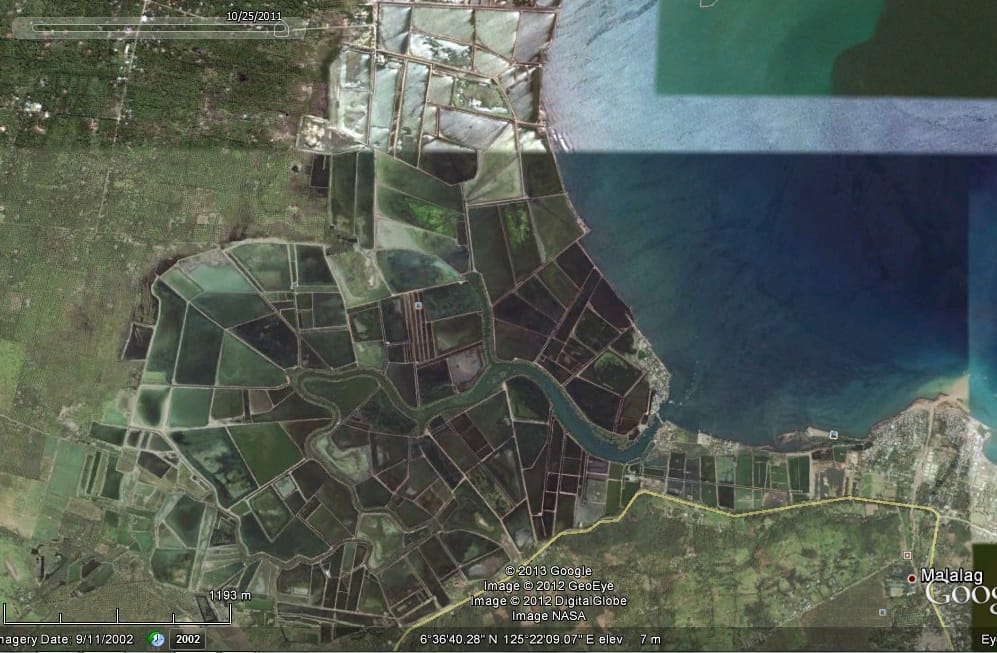
We had planned to meet at the fishponds at 8am. I made my own way there and started a little earlier. I saw the DENR from a distance as they arrived at 10am but did not meet with them until I returned to my car at 12.30pm.
The birds here seem less shy than my local Aquasur fishponds, maybe an indication of less persecution.

There were many shallow and empty ponds so the birding was good with a wide selection of waders and some high counts.


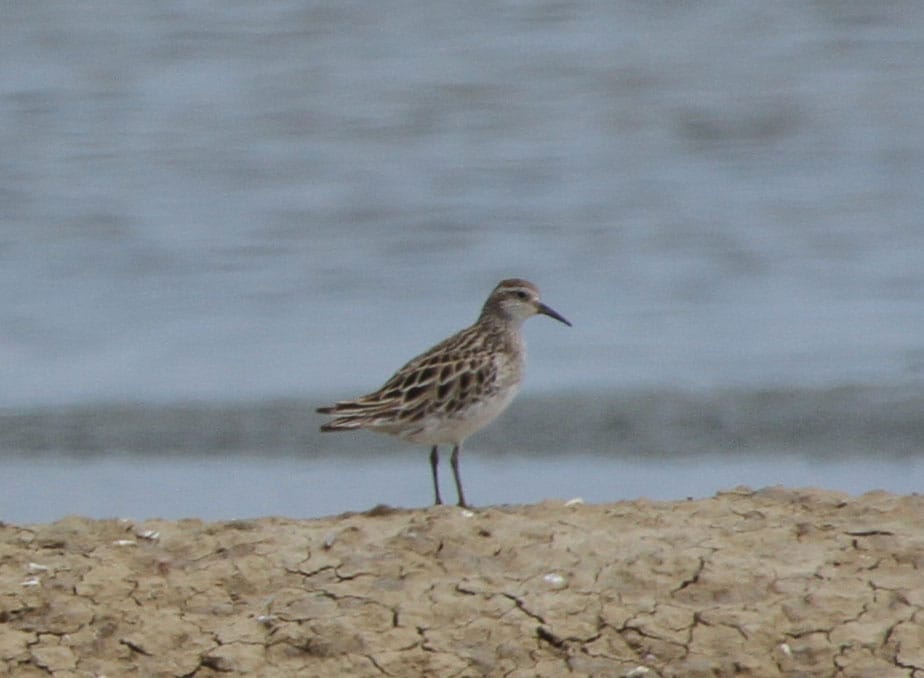
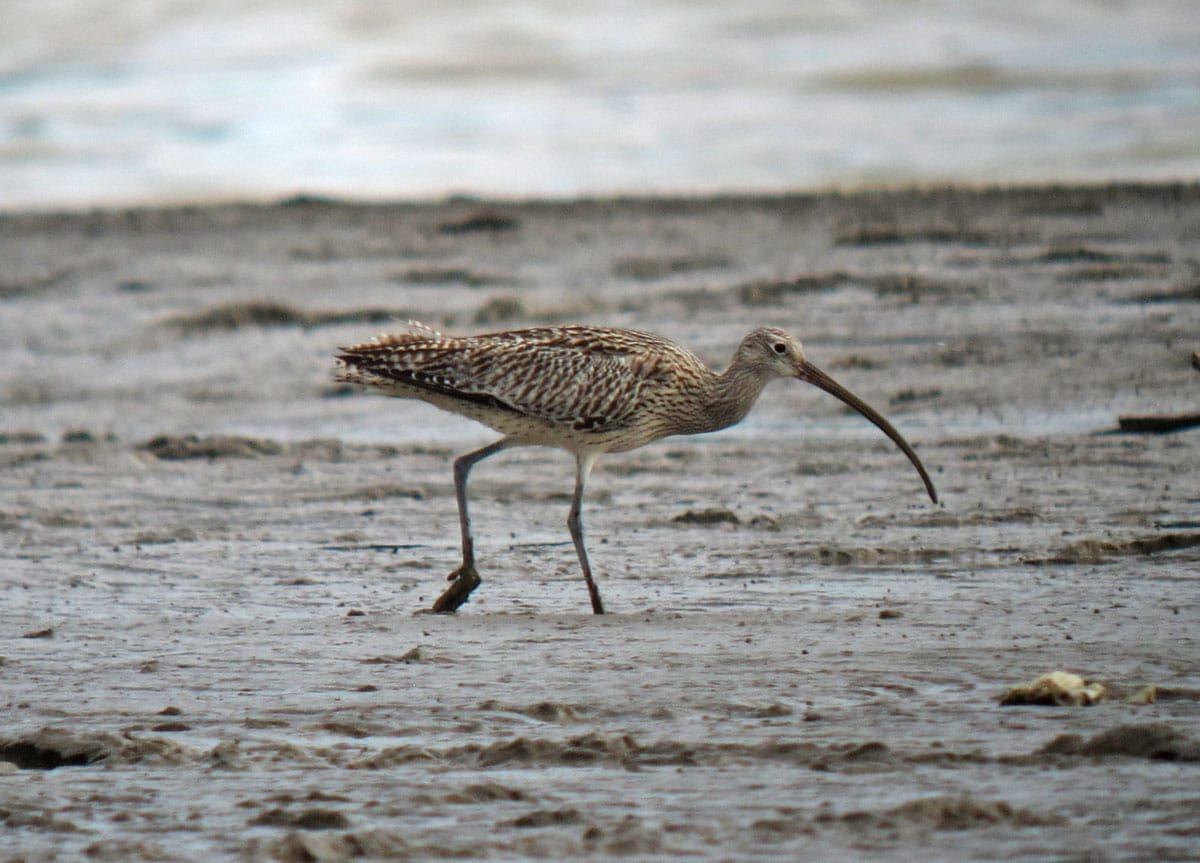
Amongst a large flock of very winter plumage Rufous-necked Stints two birds stuck out. A single bird with body calendar malfunction was already sporting full summer plumage. A second bird had two coloured flags on the upper right leg, black over white, indicating the bird had been tagged at Chongming Island, China.

SITE/LOCALITY: Malalag Bay Mudflats, Davao del Sur
START DATE: 1/24/2013
START TIME: 07:30 AM
TIME IN FIELD: 5
NAME OF BIRDER(REPORTER): Pete Simpson
ENVIRONMENT CONDITION: Low Tide 0.4m at 10:00AM
TRIP NOTES: AWC
BIRDLIST
1. Grey Heron Ardea cinerea 2
2. Great Egret Ardea alba 7
3. Intermediate Egret Egretta intermedia 1
4. Javan Pond-Heron Ardeola speciosa 110
5. Little Heron (Striated Heron) Butorides striata 3
6. Brahminy Kite Haliastur indus 1
7. Peregrine Falcon Falco peregrinus 1
8. White-browed Crake Porzana cinerea 2
9. Grey Plover Pluvialis squatarola 120
10. Asian Golden-Plover (Pacific Golden-Plover) Pluvialis fulva 280
11. Little Ringed-Plover Charadrius dubius 4
12. Kentish Plover Charadrius alexandrinus 10
13. Lesser Sand-Plover (Mongolian Plover) Charadrius mongolus 40 14. Far Eastern Curlew Numenius madagascariensis 2
15. Whimbrel Numenius phaeopus 5
16. Black-tailed Godwit Limosa limosa 90
17. Common Redshank Tringa totanus 140
18. Common Greenshank Tringa nebularia 150
19. Wood Sandpiper Tringa glareola 21
20. Marsh Sandpiper Tringa stagnatilis 270
21. Common Sandpiper Actitis hypoleucos 20
22. Rufous-necked Stint (Red-necked Stint ) Calidris ruficollis 450
23. Sharp-tailed Sandpiper Calidris acuminata 16
24. Curlew Sandpiper Calidris ferruginea 2
25. Broad-billed Sandpiper Limicola falcinellus 20
26. Black-winged Stilt Himantopus himantopus 850
27. Gull-billed Tern Sterna nilotica 1
28. Whiskered Tern Chlidonias hybridus 650
29. Common Kingfisher Alcedo atthis 1
30. White-collared Kingfisher (Collared Kingfisher) Todirhamphus chloris 8
31. Pied Triller Lalage nigra 2
32. Golden-bellied Flyeater (Golden-bellied Gerygone) Gerygone sulphurea 10
33. Zitting Cisticola (Fan-tailed Cisticola) Cisticola juncidis 6
34. Pied Fantail Rhipidura javanica 2
35. Yellow Wagtail Motacilla flava 20
36. Java Sparrow Lonchura oryzivora 2
Site 2 La Paz, Carmen, Davao del Norte

La Paz involved a boat ride from the river bank to the river mouth. On our second visit I had advised the DENR of the low tide times and we did a good count of the area.

A very impressive flock of Asiatic Golden Plover here but tough to photograph from a moving boat, and too much sun for my sensitive skin.
Also of note here, a lone Chinese Egret.

SITE/LOCALITY: La Paz, Carmen, Davao del Norte
START DATE: 1/23/2013
START TIME: 09:00 AM
TIME IN FIELD: 2.5
ENVIRONMENT CONDITION: Low tide @0.4m 09:00AM
BIRDLIST
1. Great Egret Ardea alba 1
2. Chinese Egret Egretta eulophotes 1
3. Little Egret Egretta garzetta 175
4. Javan Pond-Heron Ardeola speciosa 30
5. Little Heron (Striated Heron) Butorides striata 1
6. Grey Plover Pluvialis squatarola 40
7. Asian Golden-Plover (Pacific Golden-Plover) Pluvialis fulva 1200
8. Kentish Plover Charadrius alexandrinus 60
9. Lesser Sand-Plover (Mongolian Plover) Charadrius mongolus 25 10. Greater Sand-Plover Charadrius leschenaultii 4
11. Whimbrel Numenius phaeopus 8
12. Common Greenshank Tringa nebularia 35
13. Wood Sandpiper Tringa glareola 2
14. Marsh Sandpiper Tringa stagnatilis 10
15. Common Sandpiper Actitis hypoleucos 5
16. Terek Sandpiper Xenus cinerea 20
17. Ruddy Turnstone Arenaria interpres 25
18. Great Knot Calidris tenuirostris 8
19. Rufous-necked Stint (Red-necked Stint ) Calidris ruficollis 350
20. Black-winged Stilt Himantopus himantopus 20
21. Black-headed Gull (Common Black-headed Gull) Larus ridibundus 5
22. Great Crested Tern Sterna bergii 4
23. Whiskered Tern Chlidonias hybridus 250
24. Golden-bellied Flyeater (Golden-bellied Gerygone) Gerygone sulphurea 2
Site 3 Banay-Banay, Davao Oriental
The furthest site and that I only visited on one occasion. The Banay-Banay area is famous for its quality rice production, but I drove through the paddies to reach the fishponds that would be the site of our count.
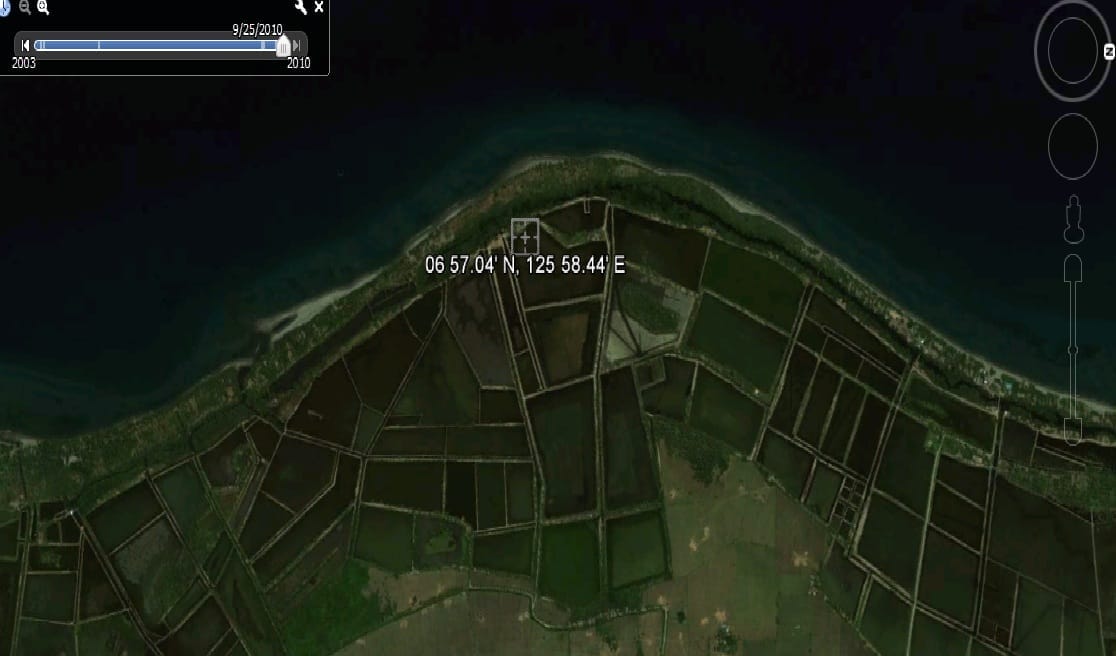
Again I birded the first few hours alone before the DENR arrived. It seems the method of harvesting has changed recently and the ponds are no longer completely drained. There were a number of ponds with water shallow enough for Black-winged Stilt only, and as with Malalag, they were there in big numbers.

Absence of smaller waders gave me time to check out the bushes which resulted in me clinching this Middendorff’s Grasshopper Warbler.
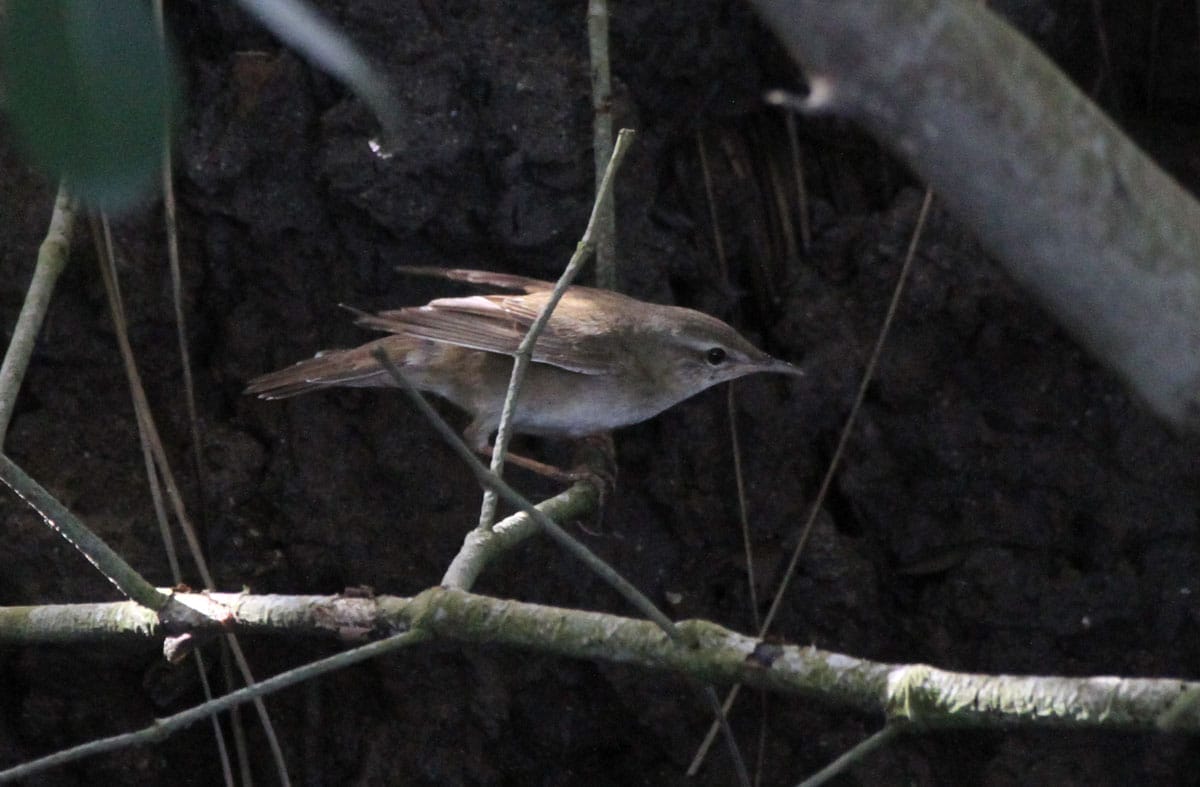
On arrival the DENR showed me to a small area of marsh/swamp where the land owner enforces a ban on fishing and hunting. Twelve Wandering Whistling Duck were a welcome sight.

SITE/LOCALITY: Banay-Banay, Davao Oriental
START DATE: 1/25/2013
START TIME: 07:30 AM
TIME IN FIELD: 4.5
BIRDLIST
1. Little Egret Egretta garzetta 10
2. Little Heron (Striated Heron) Butorides striata 3
3. Cattle Egret Bubulcus ibis 25
4. Cinnamon Bittern Ixobrychus cinnamomeus 4
5. Wandering Whistling-Duck Dendrocygna arcuata 12
6. Osprey Pandion haliaetus 1
7. Brahminy Kite Haliastur indus 2
8. White-browed Crake Porzana cinerea 3
9. White-breasted Waterhen (White-breasted Bush-hen) Amaurornis phoenicurus 2
10. Common Moorhen Gallinula chloropus 2
11. Grey Plover Pluvialis squatarola 2
12. Common Redshank Tringa totanus 38
13. Marsh Sandpiper Tringa stagnatilis 8
14. Black-winged Stilt Himantopus himantopus 1000
15. Whiskered Tern Chlidonias hybridus 150
16. Spotted Dove (Spotted-necked Dove) Streptopelia chinensis 6
17. White-collared Kingfisher (Collared Kingfisher) Todirhamphus chloris 2
18. Barn Swallow Hirundo rustica 100
19. Clamorous Reed-Warbler Acrocephalus stentoreus 2
20. Middendorff’s Grasshopper-Warbler (Middendorff’s Warbler) Locustella ochotensis 1
21. Yellow Wagtail Motacilla flava 5
22. Brown Shrike Lanius cristatus 4
23. Olive-backed Sunbird Cinnyris jugularis 8
24. Chestnut Munia (Black-headed Munia) Lonchura malacca 40
Site 4 Bucana Beach, mouth of the Davao River
I carried out and will submit one AWC count independently, Bucana Beach, the mouth of the River Davao. The DENR tell me they used to include this site but stopped when squatter encroachment caused disturbance and made visits uncomfortable.

I agree that birding my local patch is not a pleasant experience, one has to watch where one treads, but the birds are still there. With over 500 birds on the day and an impressive flock of Black-headed Gulls, I hope it gets re-included in the annual census.

SITE/LOCALITY: Bucana Beach, Bucana, Davao City
START DATE: 1/21/2013
START TIME: 06:30 AM
TIME IN FIELD: 2
ENVIRONMENT CONDITION: Low Tide @ 0.4m 06:05AM
BIRDLIST
1. Chinese Egret Egretta eulophotes 2
2. Little Egret Egretta garzetta 5
3. Kentish Plover Charadrius alexandrinus 5
4. Lesser Sand-Plover (Mongolian Plover) Charadrius mongolus 20
5. Greater Sand-Plover Charadrius leschenaultii 4
6. Whimbrel Numenius phaeopus 6
7. Common Greenshank Tringa nebularia 30
8. Common Sandpiper Actitis hypoleucos 5
9. Terek Sandpiper Xenus cinerea 55
10. Grey-tailed Tattler Heteroscelus brevipes 42
11. Sanderling Calidris alba 2
12. Rufous-necked Stint (Red-necked Stint ) Calidris ruficollis 30
13. Black-headed Gull Larus ridibundus 151
14. Great Crested Tern Sterna bergii 6
15. Little Tern Sterna albifrons 10
16. Whiskered Tern Chlidonias hybridus 160
The DENR say they have been counting at the first three sites for more than ten years. I cannot comment on the trends as I do not have access to that data, that is for the AWC office.
For the AWC next year I would like to investigate more sites in the Gulf of Davao, to get an idea of the percentage that these counts represent of the total number of birds wintering in the Gulf, and maybe find some better sites.

Pingback:February 2013 | e-BON